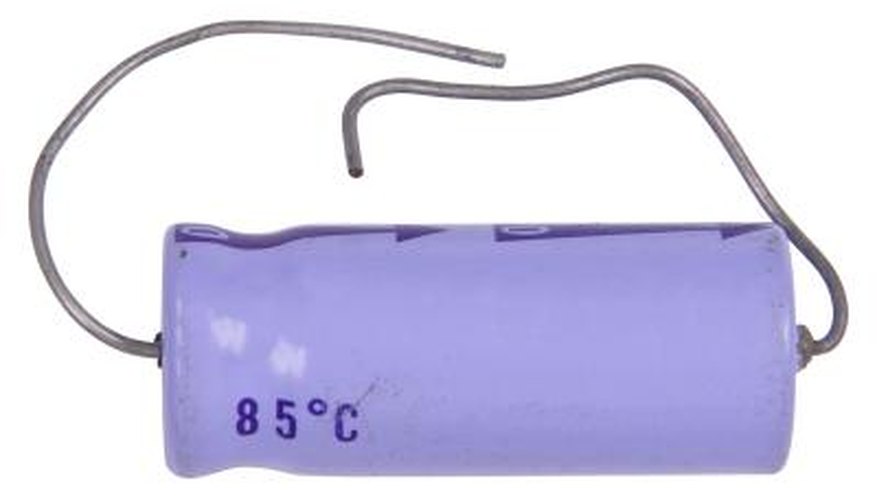Capacitors are electrical devices that can be used to store electrical energy, modify AC signals or "smooth out" direct-current electrical energy. Many of the capacitors that you will find at an electronics store will be one of two types: polarised and non-polarised. Since polarised capacitors will only work if they are installed properly, it is important to be able to tell the difference between both capacitor types.
- Capacitors are electrical devices that can be used to store electrical energy, modify AC signals or "smooth out" direct-current electrical energy.
- Since polarised capacitors will only work if they are installed properly, it is important to be able to tell the difference between both capacitor types.
Check the capacitor case. If there is an arrow with "-" symbols, a black arrow or a black stripe running down one side of the capacitor case, the capacitor is polarised. The arrow or black stripe is always printed next to the negative lead. If there is no arrow, proceed to the next step.
Check the length of the capacitor's wire leads. When both leads are on the bottom of the capacitor and one lead is longer than the other, the capacitor is polarised. The short lead is the negative lead. If the capacitor contains connection lugs instead of wire leads, proceed to the next step.
Check the top of the capacitor. Some polarised capacitors -- such as car audio capacitors -- contain "+" and "-" markings at the top near the capacitor's electrical terminals.
TIP
If the capacitor lacks markings identifying the negative lead, the capacitor is non-polarised.
